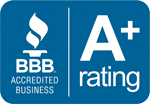As the new year gets underway amid fears of a looming recession and stock market gyrations, now is a good time to take steps to bolster your savings and financial plans.
Pundits expect continued volatility as the Fed weighs more interest rate hikes to tame inflation, which have been roiling the stock market. Inflation has ebbed, the housing market has cooled, but the economy keeps adding jobs at a robust pace.
With all of this uncertainty, you may want to consider these steps to protect your wealth.
Pay down high-interest debt
Paying off credit cards and other high-interest consumer debt is one of the smartest investments you can make.
Thanks to the steady interest rate hike parade by the Fed in the average credit card charges an annual interest rate of 21.65% up from 14.5% at the start of 2022, according to the WalletHub “Credit Card Landscape Report.” Any balances you can pay off will net you an impressive return — with no risk.
Rebalance your portfolio
2022 was a volatile year for stocks. The tumult in the face of a possible recession may have have left your investment portfolios overexposed to stock market risk.
It might make sense to sell some stock holdings and buy something a little less volatile.
As you do so, be alert for opportunities to sell some losing investments from your non-retirement accounts as well.
This creates capital losses, which you can use to offset up to $3,000 in ordinary income, and an unlimited amount of capital gains. This may significantly reduce your overall capital gains tax bill.
Maximize your tax-advantaged contributions
At a minimum, try to contribute enough to max out your employee match.
Try to contribute as much as you can to an IRA or Roth IRA. The maximum allowable contribution for 2023 is $6,500, or $7,500 for those age 50 and older. If you’re married, you can contribute an additional $6,500 to a spousal IRA ($7,500 if your spouse is age 50 or older).
If you haven’t maxed out your 2022 IRA contributions, you still have until April 15, 2023 to do so.
For 2023, the maximum allowable contribution limit for 401(k)s is $22,500. If you’re age 50 or older, you can contribute up to $30,000.
Think beyond retirement accounts
IRAs and 401(k)s are great, but there are other ways to minimize taxes while setting money aside. Health savings accounts, for example, allow qualified individuals to contribute up to $3,850 per year, and families to save $7,750 — all pre-tax. To contribute, you must be enrolled in a high-deductible health plan.
Any money you spend for qualified health care expenses is tax-free. Unused money is available to supplement retirement spending after age 65, just like an IRA.
Consider a Roth conversion
Chances are good that future tax rates will be higher. Consider locking in today’s presumably lower income tax rates on your IRA accounts by converting them to a Roth account.
You’ll pay ordinary income taxes on amounts you convert. But if you leave the money in the accounts at least five years, it grows tax-free.
What’s more, making the conversion can help save taxes on Social Security income, as well, when you begin taking benefits.
For the best result, try to pay any taxes due with money from outside the IRA.
Brace for recession
While most analysts don’t expect a massive downturn like we experienced in 2008, economists do expect a mild recession later in 2023 or early 2024. The stock market may continue to swing wildly during this time.




